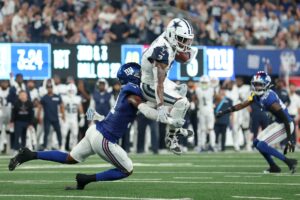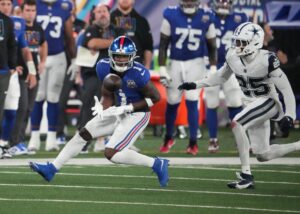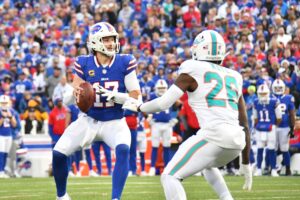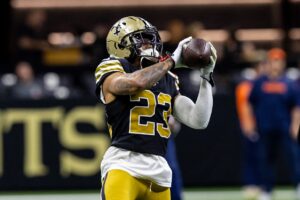The Los Angeles Chargers aren’t exactly strangers to slow starts. They’re currently sitting at 1-2 as of this writing, which might have some fans concerned. Based on record alone, that wouldn’t be cause for concern because they started 1-2 last year as well. What is cause for concern is the fact that the Los Angeles Chargers offense seems to be forgetting to come out of the locker room after halftime. They’ve held a halftime lead in every game, only to blow it (though they did escape the Indianapolis Colts in overtime despite that). What’s the issue here? It’s not exactly clear-cut, but the Chargers are going to have to figure it out.
Los Angeles Chargers Offense Struggling in Second Halves of Games
The Journey so Far
Let’s take a look at the scoring disparity here. In the first halves of games, the Chargers have outscored their opponents 44-19. They’ve played solid football in those first halves, finishing drives and shutting down the opposing offense. But after halftime, they’ve been outscored 45-10. That is unacceptable.
While they escaped the Colts in overtime in Week 1, both of those other two games ended with the Chargers behind in the final few minutes, and quarterback Philip Rivers trying to lead them back – only to come up short. That’s not particularly common for him to come up short two games in a row like that when it matters.
Various Factors at Play
There are multiple things that go into an offense that plays quite well in one half suddenly disappearing in the next. And not a lot of it is even on Rivers. He hasn’t been turning the ball over a ton – he only has two interceptions and one lost fumble through three games. Part of it is the offensive line; they’ve been missing starter Russell Okung for a while, and now they’re at a point where they’ve got a defensive lineman practicing at offensive tackle.
But there’s also been some issues at the receiver and tight end spots – both with injuries and ineffectiveness. Hunter Henry has been out, Mike Williams may not be at full strength, and Travis Benjamin has been ineffective (only four catches in three games). And as spectacularly as Keenan Allen has been playing, he can’t be the only target at receiver. So maybe it’s just a matter of Williams and Henry getting to 100% again.
But it’s still on the offense to finish drives in the second half. It’s not even like they’ve really been taking their foot off the gas pedal in terms of play calling. Those drives just keep fizzling out, whether it’s the rare turnover or the backup kicker / punter Ty Long missing kicks repeatedly in Week 2. It’s hard to know what the biggest issue at fault here is, but they have to find a way to score points in the second half – or they aren’t going to win most games unless their defense bails them out.
Gordon’s Absence Not a Factor
Some may wonder if Melvin Gordon’s absence would be making much of a difference. And to be fair, it is very likely that Gordon would not have fumbled on the goal line like Austin Ekeler did in Week 2. But in terms of general running efficiency, Gordon’s absence hasn’t really played a factor. Ekeler’s averaged 4.2 yards per carry and has four total touchdowns. And while Justin Jackson has been playing second fiddle, he’s averaged 7.9 yards per carry.
So aside from that one fumble, it’s hard to see Gordon’s absence as being the problem, or even one of the problems. Anyway, he’s ended his holdout, so he’ll be playing again soon. And while having him back certainly won’t hurt, it’s very unlikely to be a magic fix. As previously stated, when an offense does very well in one half and then doesn’t do so well in the second half, there are probably a multitude of factors.
Last Word
There’s certainly reason to be concerned about the way the season has started for the Chargers, but as stated earlier, this isn’t unfamiliar territory for them. They’ve worked their way out of slow starts before. And for them, maybe the answer simply is everyone getting back to full strength. Time will tell if they can get their act back together fast enough, though. The AFC may be the less competitive of the two conferences right now, but that doesn’t mean they won’t have catching up to do.
Main Photo:
Embed from Getty Images






